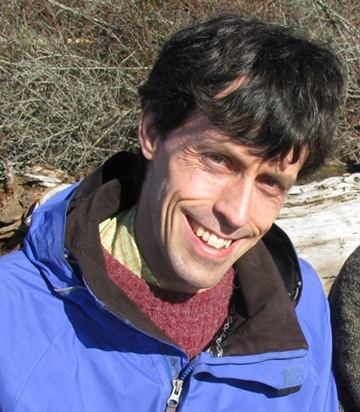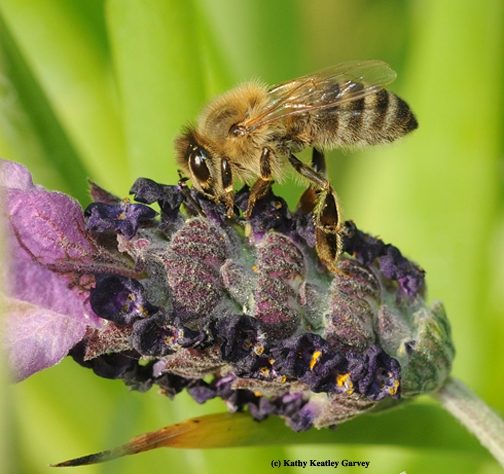
A honey bee, that is.
Research entomologist Jay Evans of the USDA's Agricultural Research Service (USDA/ARS) will discuss "What's It Like Inside a Bee? Genetic Approaches to Honey Bee Health" at the UC Davis Department of Entomology and Nematology seminar from 12:10 to 1 p.m., Wednesday, Feb. 4 in 122 Briggs Hall.
The Marin County Beekeepers will host the bee scientist.
"Honey bees are the preferred agricultural pollinators worldwide, and are important natural pollinators in Europe, Asia, and Africa," Evans says. "The European honey bee, Apis mellifera, is both aided and abused by humans, leading to a worldwide distribution on one side, and alarming regional die-offs on the other. Primary causes of honey bee colony death range from inadequate nutrition to stress from chemical exposure and maladies caused by a diverse set of parasites and pathogens."
"Often, domesticated honey bees face two or more stress agents simultaneously. Genetic approaches are being used to determine and mitigate the causes of bee declines. Genetics screens are available for each of the major biotic threats to bees, and screens have been used to determine risk levels for these threats in the field. Thanks to extensive analyses of the honey bee genome, tools are also available to screen bees for heritable traits that enable disease resistance, and to query the expressed genes of bees to infer responses to chemicals and biological stress. This talk will cover genetic insights into honey bee health, disease resistance and susceptibility to chemical insults."
Evans received his undergraduate degree in biology at Princeton and his doctorate in biology from the University of Utah. He did a postdoctoral fellowship at the University of Georgia, where he became interested in honey bees. After a brief project on queen production at the University of Arizona, he joined the USDA/ARS as a research entomologist with the USDA-ARS Bee Research Laboratory, Beltsville, MD.
He is especially interested in insect immunity and in the abilities of social insects to evade their many parasites and pathogens. He focuses his projects on a range of bee pests including the American foulbrood bacterium, small hive beetles, nosema, viral pests and varroa mites.
Evans was an early proponent of the Honey Bee Genome Project and helped recruit and organize scientists interested in applied genomics for bees. He has improved and applied genetic screens for possible causes of colony collapse disorder and is now heading a consortium to sequence the genome of the Varroa mite in order to develop novel control methods for this key pest.
Plans call for recording the seminar for later posting on UCTV.
Attached Images:
